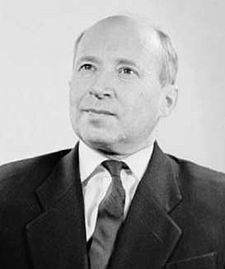When you talk over the phone with an adult stranger, you can generally determine if this person is male or female. From this, I conclude that the voice characteristics are often noticeably different for males and females. There are many other characteristics that have a different distribution by gender — for example, height.
My question is: “Can we find a trait such that the distributions are the same for both genders?”
Trying to find the answer, I remembered what we learned in high school about the genetics of eye color. I checked the Internet on the subject and discovered that the story is somewhat more complicated than what I studied 30 years ago, but still we can say that eye color is defined by several genes, which are located on non-sex chromosomes. That means, your eye color depends on the genes your parents have and doesn’t depend on your sex. A boy and a girl from the same parents have the same chances for any particular eye color.
Since eye coloring has nothing to do with gender, women and men are equal in the eyes of eye colors.
Does that mean that if we check the distribution of eye color for the world population, the distribution histogram will be the same for men and women? That sounds like a logical conclusion, right? I would argue that this is not necessarily the case.
Let me remind you that the distribution of eye color depends on the country. China has an unprecedented gender imbalance, with 6% more men than women in its population. As the eye color of Chinese people is mostly dark brown, this creates an extra pool for a randomly chosen man in the world to have a darker eye color than for a randomly chosen woman. If we exclude China from consideration, we can still have different distributions. For example, in Russia the life expectancy for women is 15 years longer than the life expectancy for men. Consequently, Russia has 14% less men than women, while globally the male/female sex ratio is 1.01. Therefore, eye colors common in Russia will contribute to female eye colors more than those of male.
What if we consider only one country? Let us look at the US. Immigrants to the US are mostly males. If the distribution of eye color for immigrants is different than the distribution for non-immigrants, then male immigrants contribute more to the eye color distribution than female immigrants.
There are so many factors impacting eye color distribution, that it isn’t clear whether it’s possible to find a group of people other than siblings in which the distribution of eye color would be the same for women and men.
We see that eye color distribution, which theoretically doesn’t depend on gender, when measured in a large population can produce different distributions for men and women.
Recently I wrote a theoretical essay titled “Math Career Predictor”, where I assumed that the distribution of math ability is different for men and women. In reality, there is no good way to measure math ability, hence we do not have enough data to draw a complete picture. For the purposes of this discussion let us assume that we can measure the math ability and that Nature is fair and gave girls and boys the same math ability. My example with eye color shows that if we start measuring we might still see different distributions in math ability in boys and girls.
My conclusion is that if we measure some ability and the distribution is different for boys and girls, or for any other groups for that matter, we can’t just conclude that boys and girls are different in that ability. For some distributions, like voice, we probably can prove that the difference is significant, but for other characteristics, different distribution graphs are not enough; we need to understand the bigger picture before drawing conclusions.
Share:





 One day I got a phone call from
One day I got a phone call from 